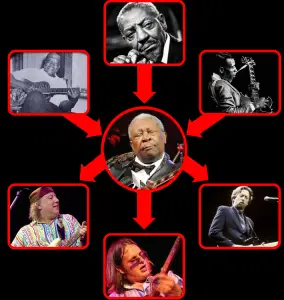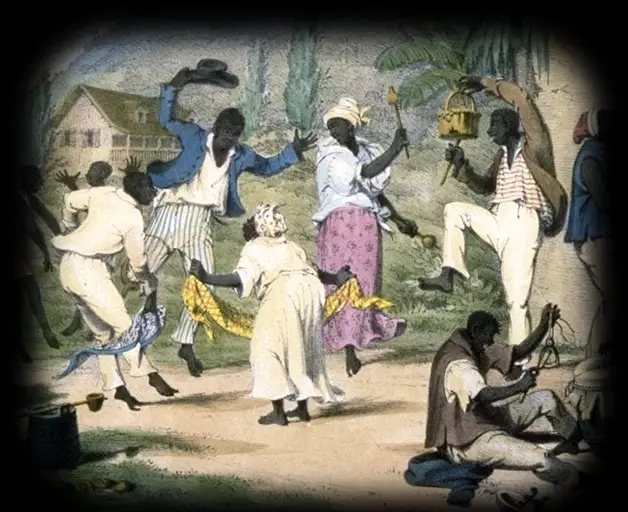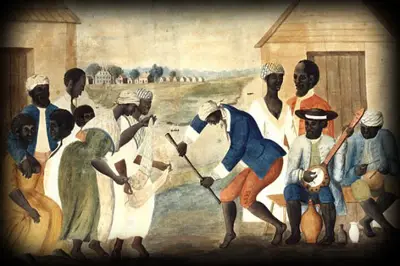All About Blues Music: History, Artists, Instruments, Origins, Characteristics, Types, and Songs
Dive into the world of blues music, a genre that has captivated audiences for generations with its raw emotion, captivating melodies, and heartfelt stories. Uncover its deep roots, explore the evolution of its instruments and styles, and meet the iconic artists who have shaped the genre and left an indelible mark on the music world. Join us on this journey as we uncover the history, artists, instruments, origins, characteristics, types, and songs of blues music.
Short Summary
- Blues music is an emotive and distinct sound rooted in African American experience, with its roots tracing back to the 1860s.
- It incorporates vocal and instrumental techniques, a 12 bar blues structure and various instruments which have all evolved over time.
- Pioneering artists such as Charley Patton, Son House & Robert Johnson have left an immense legacy that continues to shape the genre today through iconic songs like "The Thrill Is Gone" by B.B King & "Me And The Devil Blues" by Robert Johnson.

The Essence of Blues Music
Blues music has long been associated with sorrow and pain, reflecting its origin in the struggles and hardships faced by African Americans during the early 20th century. Its defining characteristics are easily identifiable; specific chord progressions, a walking bass line, call and response, dissonant harmonies, syncopation, melisma, and flattened 'blue' notes. All of which give Blues music its unique sound. These elements work together to create a unique musical genre that has captivated audiences for generations, with its passionate vocals, lamenting guitar moments, and moving subject matter.
The blues style emerged as a reflection of the pain, loss, and injustice experienced by African Americans, but it also captured the triumph of enduring these difficult experiences. Its influence on other genres, particularly rock and roll, is undeniable. At the core of blues music is the 12-bar blues structure, which is characterized by its I-IV-V chord progression, creating a foundation upon which countless blues songs have been built.
The Roots of Sadness
Blues music can trace its roots back to the Deep South of the United States around the 1860s, where it evolved from the oral tradition of African American work songs and spirituals. Its recurring chord progression, microtonal notes, and lyrical content often focusing on love and sadness set it apart as a unique genre. Early blues instruments, such as the banjo, guitar, harmonica, and piano, were used to create the distinct sound that would later evolve into a variety of subgenres, including rural blues and urban blues.
The influence of blues music can be seen in many other genres, including jazz, rock and roll, and hip-hop. Its fusion of African American work songs, spirituals, and other musical traditions has left a lasting impact on the music world. As blues music gained popularity, it continued to evolve, incorporating new instruments and styles, and inspiring countless artists and bands throughout history.
Vocal and Instrumental Techniques
In blues music, the vocalist often takes center stage, initiating call-and-response patterns and expressing the emotional depth of the music's subject matter. Instrumentally, blues musicians have utilized various techniques to create a unique sound, often characterized by the use of electric guitar, chord progressions, and call-and-response patterns.
The influence of blues music on other genres is undeniable, particularly in the realm of jazz. The two genres share several elements, such as call-and-response patterns, syncopation, and improvisation, but they employ these elements in distinct ways, creating their own unique musical styles.
The fusion of blues and jazz techniques has resulted in a rich musical tapestry that continues to inspire musicians and captivate audiences around the world.
The 12-Bar Blues Structure
The 12-bar blues structure is a fundamental element of blues music, consisting of a repeated twelve-bar chord progression that is predominantly based on the I, IV, and V chords. This structure has been utilized since the beginning of the genre, providing a foundation upon which countless blues songs have been built. Its simple yet versatile format allows for a wide range of harmonies and melodies, making it a popular choice for musicians and composers across various genres.
Early solo blues musicians would often take a more free form approach to the structure, allowing their own creativity and improvisation to inform the piece. As bands began playing the blues, it became more formalized and standardized. Robert Johnson's version of 'Cross Road Blues' and 'Sweet Home Chicago' differ from the standard 12 bar structure, with lengths ranging from fourteen to fifteen bars. When these songs were taken up by other musicians, they morphed into a more traditional 12 bar form.
Evolution and Origins of Blues Music
Blues music has a rich and complex history, originating from African American work songs and spirituals in the Deep South following the US Civil War in the 19th century. As the genre gained popularity throughout the 20th century, it evolved into various subgenres, such as blues rock, country blues, Chicago blues, and Delta blues.
The customary AAB lyric pattern in blues music, which emerged in the 1920s, further distinguishes the genre and has had a lasting impact on its development. As blues music evolved and gained momentum, its tempo progressed from a slow pace to a faster one, reflecting the changing tastes and preferences of its growing audience.
African American Work Songs and Spirituals
African American work songs, developed between the seventeenth and nineteenth centuries during the era of slavery, played a significant role in the origins of blues music. These songs were sung by slaves while engaged in laborious tasks, such as working in the fields, in order to pass the time and make the work more bearable. Additionally, work songs served to pass down information about the lived experience of enslaved people to their communities and families.
The influence of African American work songs on other genres, including blues, jazz, and gospel, is significant. Songs such as "John Henry", "Swing Low, Sweet Chariot" and "Wade in the Water" are examples of African American work songs that have been adapted and covered by numerous contemporary artists, showcasing their lasting impact on the music world.
The Deep South and the Birth of Blues
The Deep South played a pivotal role in the genesis of blues music, which emerged in the southern United States following the American Civil War. The region's cultural influences, including work songs, field hollers, minstrel show music, ragtime, church music, and the folk and popular music of the white population, all contributed to the birth of blues music in the Deep South.
One of the pioneers of the blues genre, Blind Lemon Jefferson, emerged from this region and had a profound impact on the evolution of blues music. His distinctive wailing, high-pitched vocal style, and intricate guitar-picking accompaniment influenced the likes of Robert Johnson and Robert Plant.
Blues as a Foundation for Jazz
The connection between blues and jazz is undeniable. Blues music has had a significant effect on jazz, with both genres sharing elements such as the 12-bar blues structure, the use of blue notes, and the call-and-response technique. Jazz musicians have often drawn inspiration from blues music, incorporating its tonalities, forms, and improvisations into their own compositions.
Songs such as Miles Davis' "All Blues" and John Coltrane's "Blue Train" exemplify the influence of blues on jazz, showcasing the rich musical tapestry that has been woven from these two genres. The fusion of blues and jazz has resulted in a lasting impact on the music world, with both genres continuing to inspire and captivate audiences around the globe.


Instruments and Roles in Blues Music
The instruments used in blues music have evolved over time, with early blues musicians primarily utilizing acoustic instruments such as guitars, harmonicas, and pianos. As the genre developed, additional instruments, including clarinets, double basses, saxophones, and electric guitars, were incorporated into the blues sound.
Modern blues bands typically utilize a combination of electric guitar, drums, double bass, piano, saxophone, and brass instruments to create their unique sound. Each instrument plays a crucial role in the overall sound of the blues band, with the drummer maintaining the tempo, the guitar and bass providing accompaniment and solos, and the harmonica and vocals providing the melody.
Early Blues Instruments
During the early stages of blues music, acoustic instruments such as guitars, harmonicas, and pianos were primarily used to create the distinctive sound that would later evolve into various subgenres. These instruments provided the foundation for the blues sound, with their rich tones and natural resonance permeating the music.
As blues music evolved and gained popularity, additional instruments, such as the clarinet and double bass, were incorporated into the blues sound, further enriching the genre's musical palette. Brass instruments such as trumpets and trombones were also occasionally utilized in blues music, adding a new dimension to the genre's sound.
Modern Blues Instruments
Today, modern blues music incorporates a diverse range of instruments, such as guitar, harmonica, piano, bass, and drums, reflecting the evolution of the genre and the influence of other musical styles. Electric guitars, in particular, have become a staple of modern blues music, allowing for greater versatility and expressiveness in the music.
Brass instruments such as the trumpet and trombone are also occasionally used in blues music, adding another layer of depth and complexity to the genre's sound. The fusion of traditional acoustic instruments with modern electric instruments has resulted in a rich and diverse musical landscape for blues music, with each instrument playing a crucial role in the overall sound of the genre.
The Role of the Blues Band
The blues band is a fundamental element of blues music, providing the basis for the sound and allowing for improvisation and artistic expression. Each instrument in the band plays a specific role in creating a unified sound, with the drummer maintaining the tempo, the guitar and bass providing accompaniment and solos, and the harmonica and vocals providing the melody.
The significance of the blues band in the genre cannot be understated, as it serves as the foundation for the music and allows each musician to contribute their own unique voice and style to the overall sound. The combination of skilled musicians and diverse instruments results in a rich and captivating blues sound that continues to captivate audiences around the world.
Iconic Blues Artists and Their Impact
Throughout the history of blues music, there have been numerous iconic artists who have left an indelible mark on the genre, such as BB King, Robert Johnson, John Lee Hooker, Little Walter, Howlin' Wolf, Blind Lemon Jefferson, Muddy Waters, Etta James, Big Joe Williams, Leroy Carr, and Bobby 'Blue' Bland. These pioneers of blues music have not only shaped the genre, but have also had a lasting impact on various other musical styles, such as rock, jazz, and country music.
The influence of these blues legends can be seen in the works of countless musicians, both past and present, and their timeless songs continue to inspire new generations of artists. Their contributions to the development of blues music, from its earliest beginnings in the Deep South to its modern incarnations, have left a lasting legacy that continues to shape the musical landscape today.
In addition to their impact on the blues genre itself, these iconic artists have also played a significant role in breaking down racial barriers and promoting cultural understanding through their music. Their powerful performances and soulful lyrics have resonated with audiences across the globe, transcending cultural and societal divides and fostering a deeper appreciation for the rich history and traditions of blues music.

Pioneers of Blues Music
Early pioneers of blues music, such as Charley Patton, Son House, Tommy Johnson, T Bone Walker, John Lee Hooker, Howlin' Wolf, Little Walter, Robert Johnson, Bessie Smith, and Muddy Waters, have had an immeasurable impact on the development and evolution of the genre. Their unique approaches to blues music laid the foundation for the diverse range of styles and subgenres that exist today and have inspired countless artists to follow in their footsteps.
These pioneers pushed the boundaries of traditional blues music, incorporating new instruments, techniques, and styles into their work and creating a lasting legacy that continues to inspire musicians today. Their groundbreaking contributions to the genre have not only shaped the sound of blues music but have also had a profound influence on other musical styles, such as rock, jazz, and country music.
Modern Blues Artists
Modern blues artists, such as Ally Venable, Kevin Burt, Keb' Mo', Ruthie Foster, Tab Benoit, Kaleo, The Marcus King Band, Tyler Bryant and the Shakedown, and Philip Sayce, among others, have continued to build upon the foundations laid by the pioneers of blues music. These contemporary artists have expanded the genre by incorporating elements of rock, jazz, soul, and other genres to create a unique and unprecedented sound.
Their impact on other musical genres is equally significant, as they have blended the traditional blues style with elements of other genres, resulting in a distinct and innovative sound that has captivated audiences around the world. The contributions of these modern blues artists have not only enriched the genre, but also played a crucial role in shaping the future of blues music.
The Influence of Blues on Other Music Genres
Blues music has had a lasting impact on numerous other genres of music, such as rock, jazz, R&B, hip-hop, country, and pop music. The fusion of blues with these other genres has resulted in a diverse and innovative musical landscape that continues to evolve and captivate audiences around the world.
The influence of blues music can be seen in the works of countless musicians across various genres, from rock legends like Jimi Hendrix and the Rolling Stones to jazz greats like Miles Davis and John Coltrane. As the genre continues to evolve and inspire new generations of artists, the influence of blues music on the broader musical landscape remains as strong and enduring as ever.

